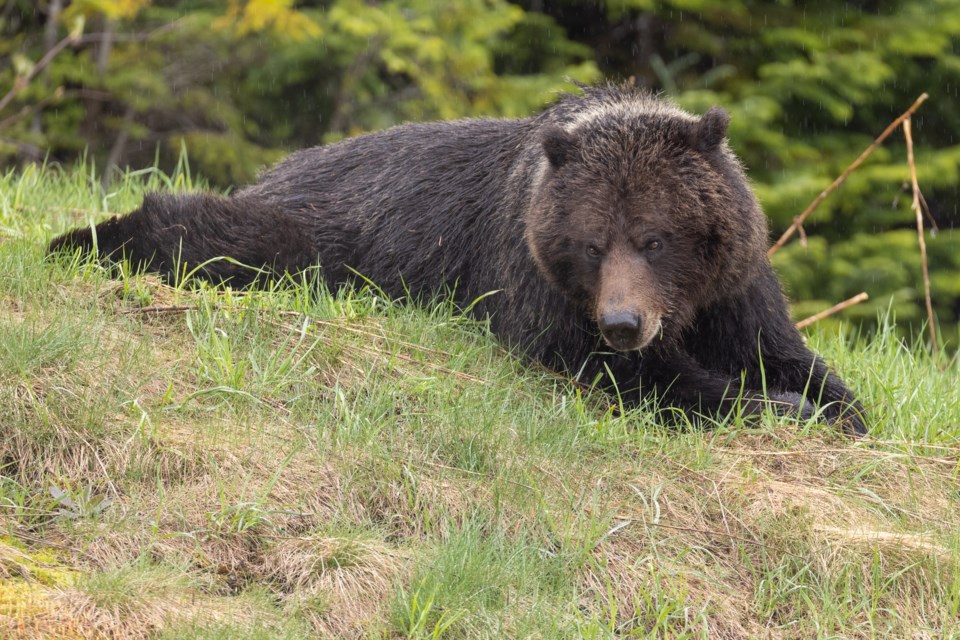Reports of grizzly bear conflicts in Whistler have effectively doubled in recent years, according to stats uncovered through a provincial Freedom of Information request.
The stats show a clear upward trajectory in grizzly bear reports to the Conservation Officer Service in Whistler.
In 2016, just six grizzly bear conflicts were reported in Whistler. That number jumped to 13 in 2017, before levelling off at 12 conflict reports in both 2018 and 2019.
In 2020, 18 grizzly conflicts were reported, followed by 13 in 2021.
In 2022, however, the number of reported grizzly conflicts jumped to 28, and from Jan. 1 to July 5, 2023, the COS received 30 reports of grizzly conflicts (20 of which came in June, and nine in May).
It’s an encouraging sign for a grizzly population that was once considered threatened, and there are two key policy changes that may account for the rise in grizzly reports in recent years.
In 2017, B.C.’s provincial government banned grizzly hunting in an effort to protect the iconic species.
That same year, the Resort Municipality of Whistler opened its Alpine Trail Network—consisting of backcountry hiking and mountain-biking trails on Mount Sproatt and Rainbow Mountain—to the public.
The trails proved immediately popular; between Aug. 4 and Oct. 12, 2017, the municipality counted approximately 6,200 visits into the area, including one day in August when 455 ascents were recorded.
But by the summer of 2018, parts of the network were closed after two separate groups had run-ins with grizzly bears.
The conflict prompted the RMOW to work backwards to solve the problem.
"We built trails up there without really understanding the use of the area by bears. I think if we could do it now, we would do things differently," said environmental stewardship manager Heather Beresford in a presentation to Whistler council in April 2020.
"We made a commitment as a municipal council a number of years ago to support the restoration of grizzly bears in the area, and so we have to do the best we can now."
At that same meeting, the RMOW endorsed a new human-grizzly bear conflict mitigation strategy developed by grizzly expert Grant MacHutchon, who was tapped to complete a habitat-mapping project with implications for trail management in the fall of 2019.
MacHutchon spent about a week in Whistler walking the trails, analyzing different areas and the vegetation—and how the bears were using it—and incorporating collared grizzly-bear data collected by the province as well.
MacHutchon came back with some key recommendations: that the RMOW not build trails to Gin and Tonic lakes, or Beverley Lake; reconsider the routing for the Flank Trail south, as well as reroutes for the Skywalk and Pot of Gold trails; install additional signs, information and monitoring, and; continue to ban e-bikes and dogs on alpine trails.
While grizzly sightings in the Whistler Valley were considered a rarity until recently, the public can expect them to continue, according to Johnny Mikes, field coordinator for the Coast to Cascades Grizzly Bear Initiative.
“A grizzly coming down in springtime to find food, we’re seeing evidence of that, and we can probably expect that to continue,” he told Pique this spring. “I think we should be viewing this as a not-very-uncommon occurrence going into the future. People need to plan for that and get their heads around it.”
The increased sightings are a positive sign of the ongoing recovery of the Squamish-Lillooet grizzly bear population to the west of Whistler, Mikes said.
“The population there, from all indications, is coming back; it is growing. There is no longer a hunt in B.C.; grizzly bears aren’t being persecuted by people, so the numbers are coming back,” he said. “There is also good habitat immediately to the west of us, so those bears are coming back.”




